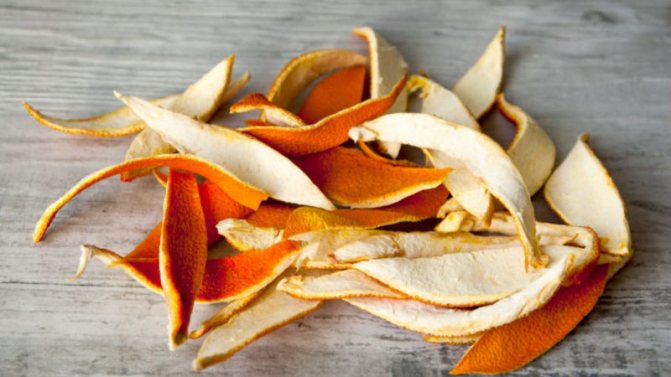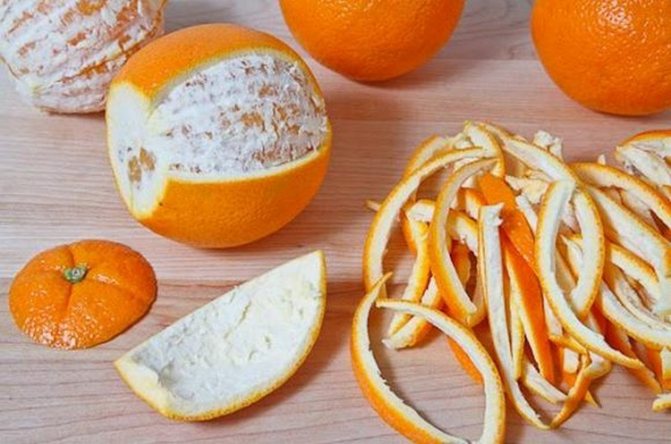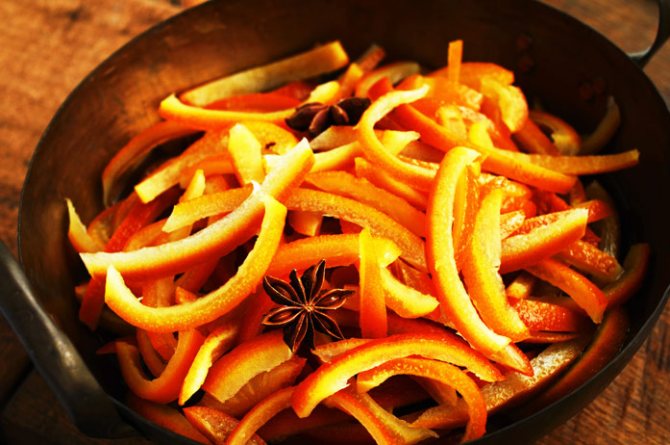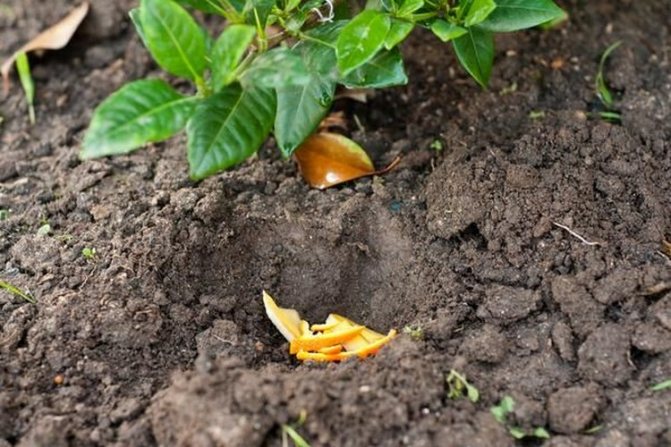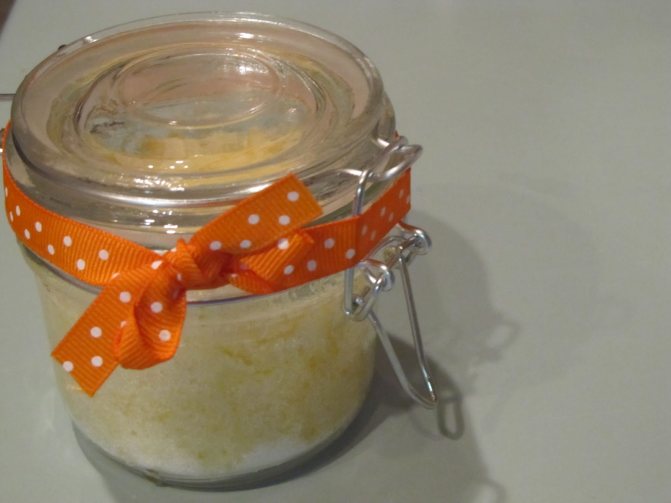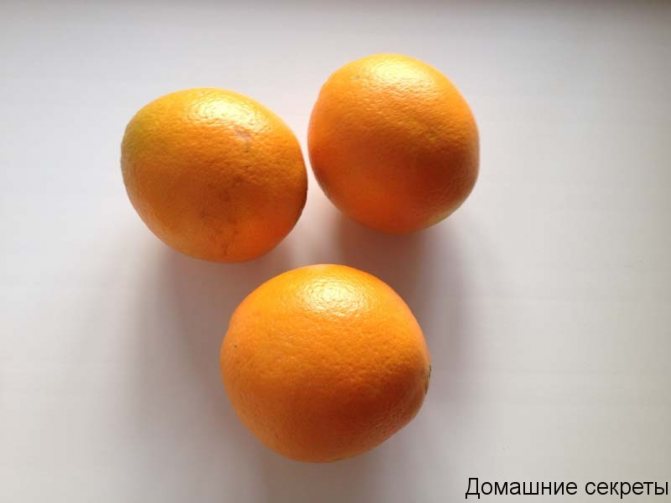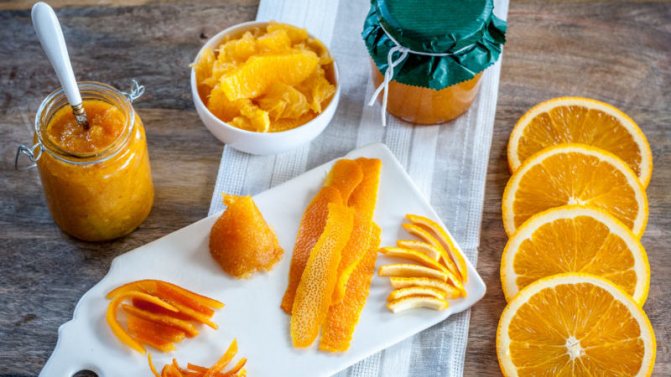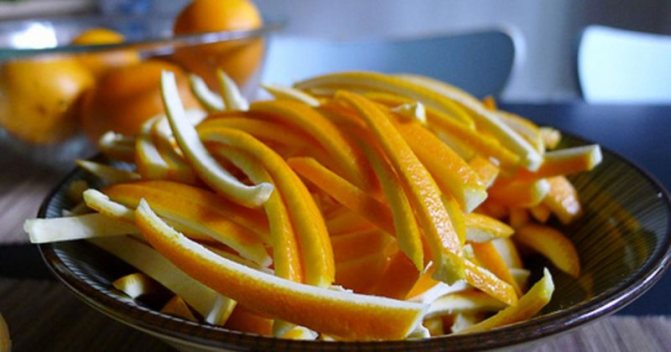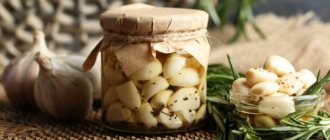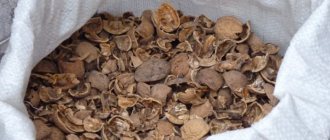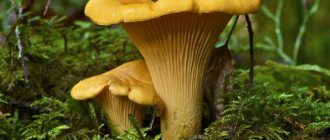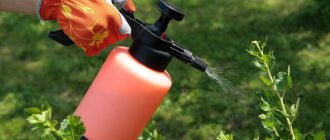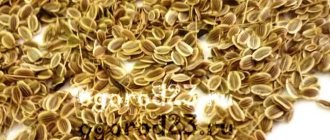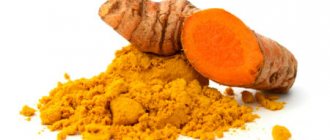Surely many people cannot live without fruits, among which oranges occupy a special place. This fruit is so unique that it benefits not only because of its pulp, but also because of its skin. The peel is even used as a fertilizer and a protective agent against parasites in the garden. Crusts are often used in cosmetology, cooking and other areas. But today we will take a closer look at the use of orange peels as a fertilizer.
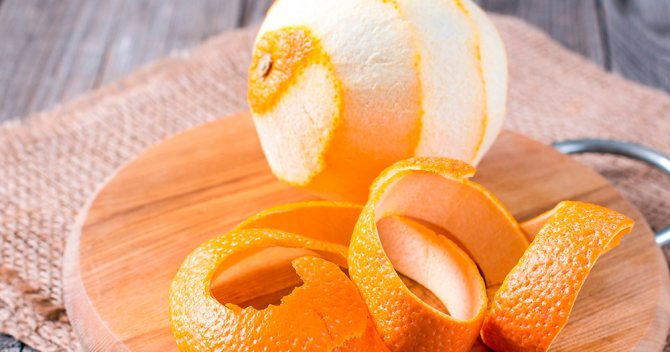
The benefits and harms of using orange peel
Recipes with citrus zest allow you to fill the human body with many valuable vitamins and minerals. This product contains a sufficient amount of pectin, flavonoids, phosphorus, sodium and potassium. It is an excellent source of vitamins A, C and E. Therefore, it is recommended for the treatment and prevention of colds.
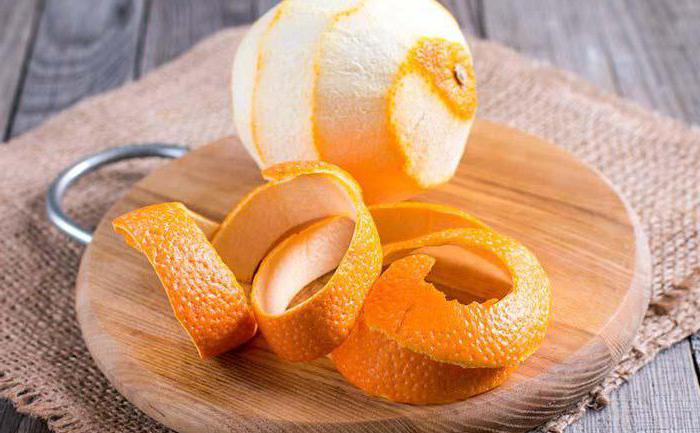

Regular consumption of orange peel helps to increase performance, lower blood cholesterol levels and reduce the risk of gallstones. Citrus peels have excellent wound healing properties, neutralize toxic substances and help restore the intestinal microflora. They stimulate the activity of the cardiovascular system, have a beneficial effect on the condition of the hair and skin.
However, there are also contraindications. For those who are interested in where to apply orange and tangerine peels, you need to remember that the peel of these citrus fruits can cause severe allergic reactions, provoke the appearance of a rash, irritation of the mucous membranes and even a rise in temperature. They should not be consumed by people suffering from intestinal disorders. Citrus peel is contraindicated with low blood pressure and high acidity.
Other peels
The top coat of many fruits and vegetables contains high doses of health-promoting compounds.
- Flavonoids are concentrated in onion and garlic peels. For example, quercetin, known for its anti-cancer and antihistamine properties.
- Watermelon rinds contain more amino acid (AA) citrulline than pulp. This AK plays an important role in strengthening the cardiovascular and immune systems.
- In potato peelings, scientists have found phenols and glycoalkaloids with a pronounced antimicrobial and healing effect.
Applying a banana peel.
Overview of ways to use orange peels
This component is widely used in cooking. Jams, jams, candied fruits, alcoholic and non-alcoholic drinks are made from it. In addition, artificial flavors are often substituted for them. Along with cinnamon and vanilla, it is added to muffins, biscuits, charlottes, jellies, mousses and other desserts. Some housewives put this ingredient in sauces, soups, salads, meat and fish dishes.
With citrus zest, you can not only cook various goodies, but also do the cleaning. After all, it is an excellent basis for creating home cleaning products. Plus, it is considered an excellent replacement for purchased air fresheners. To fill the house with pleasant aromas, you just need to boil the water and add cloves, cinnamon and chopped orange peel to it.
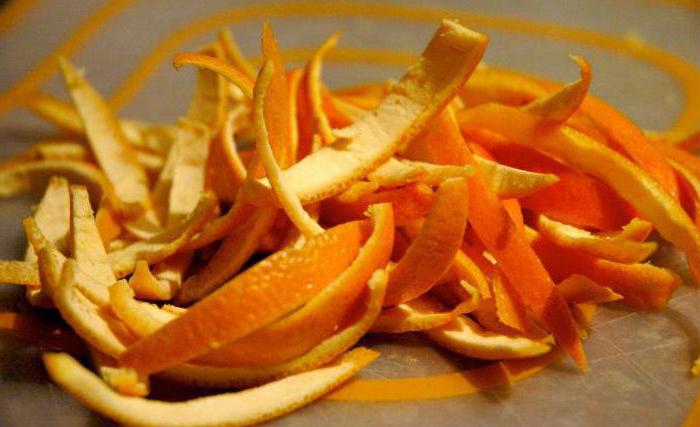

Few people know that this is one of the most effective means for scaring cats away.If your pet is in the habit of spoiling indoor plants, then you can simply put a little citrus zest around the flowerpot.
These are not all the ways to use orange peel. It is one of the most popular cosmetic ingredients. And some people throw it around to get rid of mosquitoes and house ants. Having figured out where and how citrus zest is used, you can start considering culinary recipes.
Eggshell
The shell of one egg weighs almost ten grams. During the winter season, such a quantity of valuable fertilizer is collected that it is enough for several beds. The shell contains elements from almost half of the periodic table: calcium, potassium, silicon, phosphorus and many other substances. Use it as a powder, infusion or crushed fragments. A finely dispersed substance is absorbed best by plants and microorganisms, so the shell is passed through a coffee grinder, meat grinder or broken by hand with a hammer. The main rule for collecting eggshells is to wash it from protein residues, dry it and store it in a cardboard box. This will prevent the appearance of a foul smell.


Eggshell is primarily a source of calcium
Methods for using eggshells:
- To deoxidize the soil. For acidic soil, eggshells are the best solution. Gathering a natural source of calcium for the entire vegetable garden is problematic. However, when planting crops, crushed shells can be poured into the hole - so the plants will also receive nutrients.
- To protect plants from the invasion of slugs and moles. The sharp edges of the white debris prevent pests from reaching roots and leaves.
- For feeding domestic plants. Broth (1 liter of water for 2 tablespoons of powder, leave for a week) water the house plants. Exceptions: Azalea, Pelargonium, Gardenia, Hydrangea, Pansies, Camellia, Ferns. They love acidic soil.
- For healthy crop growth. Calcium dressing is loved by many garden and garden plants: lettuce, carrots, onions, peppers, watermelon, eggplant, flowers, stone fruits.
- For drainage. A layer of crushed shells of 2 centimeters will protect the roots of plants from decay.
Cookies
This delicious and aromatic dessert will surely be appreciated by both large and small sweet tooth. This recipe for using orange peels implies the presence of additional components. Therefore, before starting to play it, check if you have at hand:
- 200 grams of premium baking flour.
- Chopped zest from two oranges.
- 2 eggs.
- A couple of spoons of water.
- A pinch of salt.
- Powdered sugar (for dusting).
- Vegetable oil.
Eggs, zest, water, salt and flour are combined in one container. Everything is thoroughly mixed until smooth, and then rolled out in a thin layer and the cookies are cut out. The resulting products are browned in boiling vegetable oil and generously sprinkled with powdered sugar.
Cabbage
This is a recipe from the same friend who prompted me to do the orange investigation. To combat cabbage butterflies (belyanka), she adds 1 glass of dry orange peel to 10 liters of water, leaves for 3-4 days, and then sprinkles cabbage with strained infusion to prevent insects from laying eggs on the leaves. My friend conducts this procedure every week throughout the season and does not find a single caterpillar on the plants.
Hare caterpillars can ruin the harvest
Cream jelly
We recommend paying attention to another simple recipe for using dried orange peels. It will surely interest lovers of homemade mousse-like desserts. To make such a jelly, you will need:
- 100 grams of crushed zest.
- 3 large spoons of sugar.
- A glass of cream.
- 2 large spoons of milk.
- 5 grams of gelatin.
- A teaspoon of coffee.
Warm milk is combined with whipped, sweetened cream.Chopped citrus zest, coffee and pre-soaked gelatin are also added there. Everything is mixed well and put into the refrigerator until it solidifies completely.
Aromatic tea
This option for using orange peels will arouse the interest of connoisseurs of unusual hot drinks. The tea prepared in this way turns out to be not only very tasty, but also extremely useful. To brew it, you will need:
- Large orange.
- A teaspoon of black tea leaves.
- 300 milliliters of drinking water.
- Honey or sugar (to taste).


Carefully remove the peel from the washed orange, pour boiling water over it and insist for ten minutes. Then the liquid is decanted, and the zest is placed in a saucepan filled with a small amount of clean water and brought to a boil. The resulting infusion is added to pre-brewed tea and mixed with sugar or natural honey.
Ants
The peel of oranges promises to drive away the first friends of aphids - ants. To this end, you need to soak a handful of dry crusts in warm water, beat the swollen zest into a gruel using a blender and spread it at the bases of berry bushes and tree boles - ants will no longer walk along the branches of these plants. If the pests have set up their camp on the garden bed, they dig up the top of the anthill and simply spread such an orange gruel on top. The recipe is quite simple, with a minimum of manipulations and ingredients. On my site there are just a few unkillable ant heaps, with which I have been struggling for years, they are suitable for conducting an experiment.
Orange peels promise to drive the ants away
Lemonade
This refreshing, sweet drink is perfect for a hot summer day. To prepare it, you will need:
- 4 glasses of clean water.
- 6 medium oranges.
- 2 cups sugar.


Carefully washed oranges are carefully peeled and ground in a blender. The zest is then added to two cups of boiling sweet water and simmered for five minutes. The resulting drink is cooled and put into the refrigerator. After some time, the remaining water and juice squeezed from six oranges are poured into the almost finished lemonade.
Slugs
The offbeat orange scent is believed to mislead many insect pests in the middle lane, but not slugs. For these omnivorous creatures, the outlandish smell is especially attractive, so the peel acts as a bait. I found the following recipe: prepare a liquid gruel from dry crusts and water and put it in cut plastic bottles. The traps must be dug in the garden and vegetable garden so that their edges are at the level of the soil. The contents of orange traps need to be updated periodically: a huge number of drowned slugs will accumulate in the bottles. I also intend to check this in the summer, since it is very unusual that the orange repels all pests, and attracts slugs. Riddle!
Orange traps promise to distract slugs from the beds
Jam
This option for using orange peels will come in handy for thrifty housewives who are used to making homemade canned food. To create such a jam, you will need:
- 400 grams of sugar.
- 2.0-2.5 cups of water.
- 400 grams of orange peel.
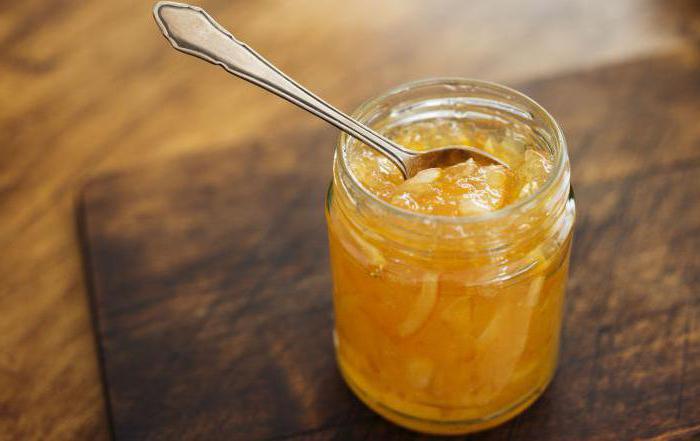

Practical part
Pre-washed skins are cut into not too large pieces, filled with cold water and left for three days, periodically changing the liquid. After the indicated time has elapsed, the crusts are cut into small squares and placed in a suitable container. Syrup made from water and sugar is also added there. All this is sent to the stove and boiled for no longer than five minutes. After the future jam has cooled completely, the heating procedure is repeated twice more. The finished product is packaged in sterile jars, closed with screw caps and stored.
Mustache-striped pests
In the spring-summer period, many of us have another pest - cats and cats, our own and neighbors. Fuzzies often take a rest right on the garden bed, not noticing the precious seedlings, or turn it into a latrine. It turns out that scaring away pranksters is easy. You need to dig fresh or dry orange peels around the perimeter of the garden and in the aisles - cats will not go to such a place.
Fluffy pests cannot stand the smell of citrus fruits
I tested the effect of orange peel at home: I took a fresh orange peel and sprinkled the juice in front of my cat's nose. Offended, he gave a runaway and all day bypassed me! Checked, fresh peels are working. But reasonable doubts arose as to whether a less fragrant dry orange peel dug in wet soil would work just as effectively.
How to make a tincture?
This option for using orange peels will surely interest home alcohol lovers. The drink prepared in this way turns out to be moderately strong and very aromatic. To make such a tincture, you will need:
- A liter of homemade moonshine.
- 250 grams of sugar.
- Skins from two oranges.
- 700 milliliters of water.
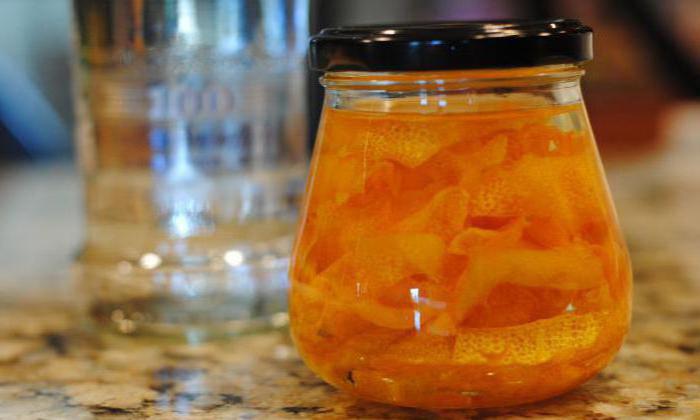

You need to start the process by getting the syrup. It is boiled from filtered water and sweet sand. The completely cooled syrup is poured into a jar, at the bottom of which there is already washed citrus peel. Moonshine is also sent there. All this is covered with a lid, shaken vigorously and removed to a dark place, not forgetting to periodically shake the container. Not earlier than five or seven days later, the drink is filtered through cheesecloth and bottled.
Carrot fly
According to the same familiar summer resident, the smell of oranges and carrot fly cannot stand. To scare off the pest from the garden, in the spring she brings dry orange peel under the digging. This is both nutrition and protection - two in one. She combines this technique with special watering. Starting in May, every 7-10 days, a friend pours a 2-3-day orange infusion on carrots from a watering can (2-3 handfuls of dry peels per 10 liters of water). Since this pest can give up to 3 generations per season, a friend carried out such a procedure until harvesting. He says that there are flies in the beds and the trail is gone. How do you like this complex of procedures?
You need to water the carrots with orange infusion throughout the season.
Candied fruit
Lovers of natural sweets will probably find another simple way to use orange peels useful. Candied fruits prepared in this way will not leave indifferent any large or small sweet tooth. To create them you need:
- 200 milliliters of water.
- 2.5 cups of sugar.
- 8 medium oranges.
- 100 grams of dark chocolate.
- ¼ teaspoon of citric acid.
Carefully remove the skin from carefully washed oranges, cut it into approximately the same long strips, fill them with cold water and leave for three days, without being lazy to systematically change the liquid. This is necessary to remove all the bitterness. Then the zest is boiled for ten minutes and rinsed under the tap. The crusts prepared in this way are poured with a syrup consisting of water and sugar, and simmered over the slowest heat. After some time, citric acid is added to the boiled mixture and heated until all the syrup is absorbed into the zest.


Then the hot skins are carefully laid out on parchment, being careful not to burn themselves, and kept at room temperature for two or three hours. Completely dried candied fruits are in turn dipped in melted chocolate and returned to paper. As soon as the finished candies have cooled, they are placed in a glass, hermetically sealed jar. Since there are no harmful additives in the composition of such a delicacy, you can safely treat them even to small sweet teeth.

